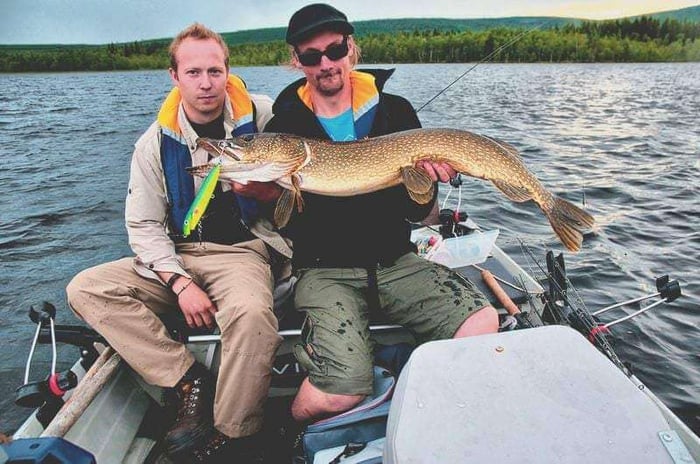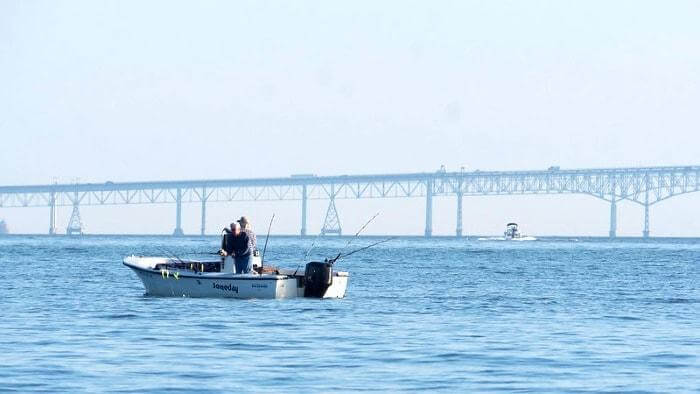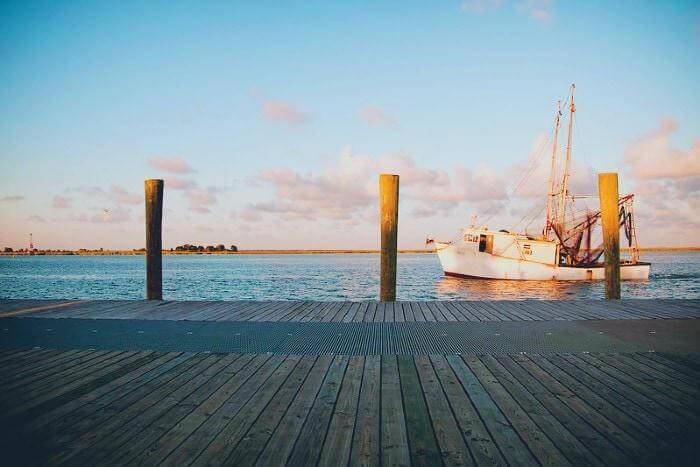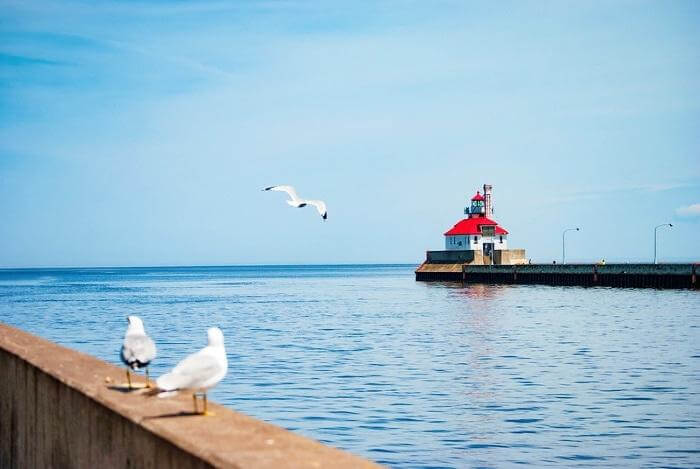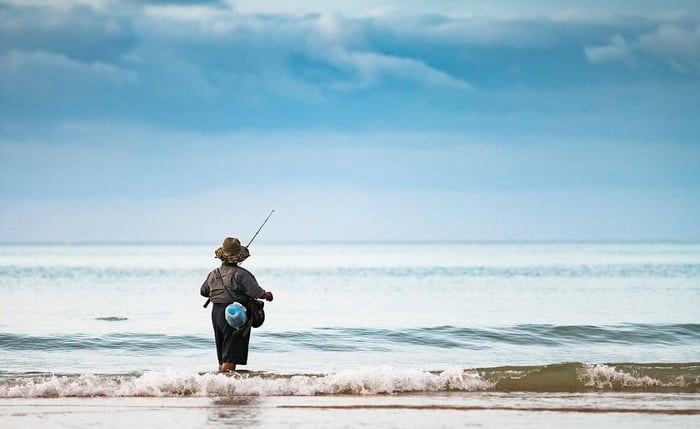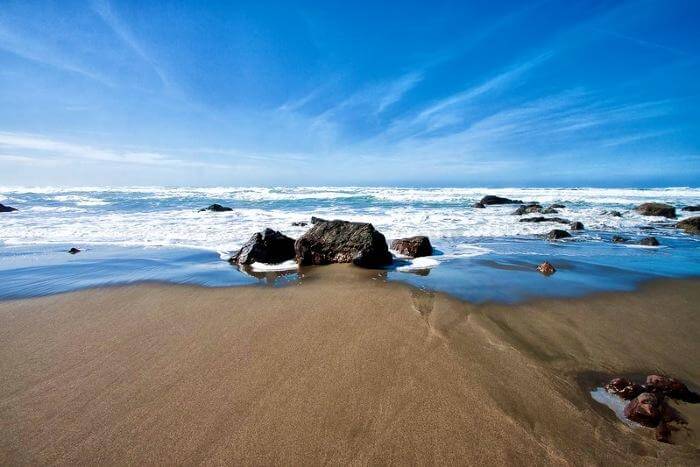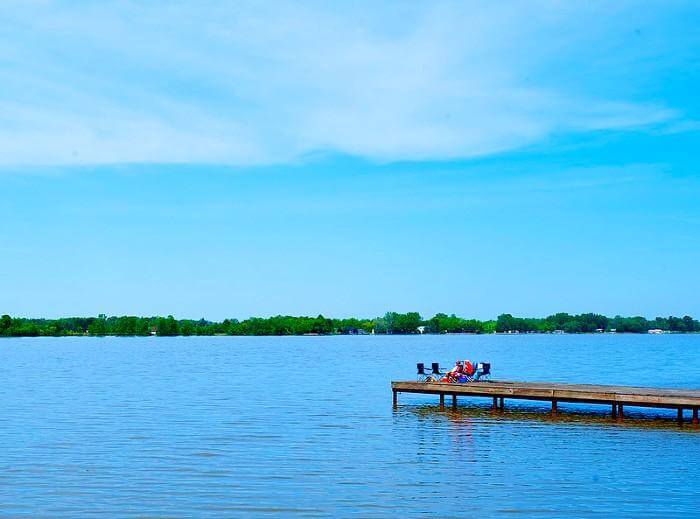Trolling is a fishing technique suitable for anglers of all skills since it is simple, fun, and effective! Combine the deadly trolling technique with a great lake troll, and you have an unstoppable fish-catching combination!
Luck is the most insignificant factor in turning into a fruitful angler. Knowing the water you intend to fish and information on the care and habitat qualities of the fish species you are after is vital for fruitful angling.
Trolling requires a boat, a propulsion strategy (engine or paddles), a rod and reel, a lake troll, and bait. The lake troll and lure are let out behind your moving boat, with the number of lines depending upon the size of the lure and lake troll you choose, alongside how deep you wish to fish.
Your boat’s forward speed will direct precisely how quick or moderate the troll or lure will run and control its depth. You should discover the fish when the troll and lure are working appropriately in the water.
Where Fish Can Be Found and Why
Not every fish can live in similar kinds of waters. Various species need various environmental conditions, particularly:
- Hiding areas, cover, structure, and the bottom
- Salinity
- Dissolved oxygen
- Water temperature
- Types and amounts of food
- Current
- Water depth
Structure
Many fish species, such as bass, northern pike, sunfish, and trout, live close to the structure. Structure refers to changes in the shape of the bottom of lakes, ponds, or rivers caused by rocks, downed trees, human-made bunks, flooded roadbeds, hills, ledges, and drop-offs.
The structure makes fish focus on specific areas. Shoreline structures in lakes and ponds may include docks, logs, stump fields, brush, rock piles, grass beds, and drowned trees that provide shelter, shade, and fish protection. Islands, sandbanks, rock piles, and log jams in streams and rivers are great fish spots.
Fish occupy particular sorts of cover since it protects them and places them in the ideal situation to catch a meal.
Salinity and Oxygen
Few fish species, like brook trout, can live without much salt in the water. Other fish, like tuna, need salt; some, like striped bass, can live in salt or freshwater. Fish additionally need a specific amount of oxygen in the water.
Species like carp can live on less oxygen than trout. Living plants and moving water rolling over rocks add oxygen to the water.
Decaying plants and animals use oxygen from the water. Numerous sorts of contamination also decrease oxygen levels. Thermal contamination may likewise be an issue, as warmer water cannot hold as much oxygen as cold water.
Temperature
Each fish species delights in a particular range of water temperatures. Bullhead catfish can flourish in waters as warm as 85 degrees F, while salmon and lake trout should have cooler 40s and 50s.
Some fish endure a wide range of temperatures, while others have narrow needs. Real anglers consider a thermometer a valuable tool for knowing when to pursue certain sorts of fish.
Food
The amount and kind of food accessible in a body of water serve a significant function in figuring out which sorts of fish you can plan to get. The currents and water depth are additionally significant components.
Scrappy sunfish will haunt shallow riffles. At the same time, lake trout favor the dark, cold depths. Bass will hammer snares on the surface. At the same time, carp feed vigorously on the bottom.
Choosing the Best Method for You
Getting them to bite your hook when you find the fish turns into the test. Every piece of the different types of fishing fits, catching particular sorts of fish. Realizing which way to use and when to use it is vital to having a productive day on the water.

The Benefits of Using a Boat
Fishing from a boat allows you to cover more water than fishing from shore and arrive at distant spots, often with deeper water. Various kinds of boats are made for multiple sorts of water and perform multiple tasks.
Canoes, boats, and jonboats can be ideal for casual fishing on streams, rivers, and lakes. Bigger waterways and more extraordinary fishing can require all the more powerful V-hulls, “cathedral” bodies, or strong sportfishing boats.
Trolling is Effective and Enjoyable
The trail draws or lures behind a gradually running boat to cover a lot of water. Trolling is especially effective for fish species that consistently feed on smaller fish.
Downrigging is a trolling strategy that uses a winch and weight (cannonball) to carry the line and bait to the particular depth where fish feed. Downriggers allow you to control the depth of your bait, anywhere from just underneath the surface to 200 feet down, and keep it running at that depth.
StillFishing is for Beginners and Experts Like
Still, fishing is the most fundamental type of angling: it waits once the bait is cast. For many people, fishing on a lake or pond was the primary fishing experience. An essential rod and reel, a baited hook, a weighted line, and possibly a colorful bobber were all required to begin.
Many individuals decide to continue fishing as they acquire more ability and knowledge of angling. Still, fishing is essential, requires a minimum of gear and specialized skills, and can yield excellent outcomes, especially from a boat that can situate you in the most favorable area.
Flipping and Pitching Get Your Lure to the Fish
Flipping is an underhand cast intended to place a bait in a given spot with as little unsettling influence as possible.
Ordinarily used in dirty water and thick cover, flipping is best finished with a bait stationary type. Flipping and pitching, a connected procedure likewise used with spinner lures, have gotten a ton of interest as bass fishing has filled in fame.
The Challenge of Fly Fishing
Fly fishing uses fake flies—bug and creature imitations- to pull in and catch fish. First, fly fishers have taken a full scope of game and panfish species, centered around catching trout and salmon.
Many fly fishers use small boats—even canoes and kayaks—to reach hard-to-reach areas. Flies seldom weigh more than a couple of grams. Thus, fly rods and lines should explicitly help the angler cast the fly.
The Best Times to Fish
There is no single ideal time to fish. This game has many variables, and various species are dynamic on various occasions. Those busy periods differ because of a large group of environmental factors.
Freshwater fish appear more dynamic not long after sunrise, at nightfall, and at least dynamic around noon and early evening. You can catch fish at noon if you comprehend what the fish are doing and change your angling strategies.
Picking the Best Season
Much like attempting to decide the best day to fish, deciding the best season requires comprehending what the fish are doing and changing your strategies accordingly.
Fishing can be an all-year sport. However, certain seasons will be more agreeable than others.
Fruitful anglers know the behaviors and accessibility of the various species. The scope of environmental factors determines which fish will be in a region randomly.
Temperature, amount of sunshine, predation, and food accessibility are vital factors. For example, lake trout plunge to the more remarkable depths of their home waters to avoid the summer heat.
Trout in waterways and streams will shift their feeding appetite when summer’s warmth welcomes many earthly bugs. Most basses move into the shadows because of the expanded light in the early afternoon.
A few species and places may have seasons when fishing is unlawful. Numerous states have shut seasons when different species are producing. Successful anglers see how all the factors influence their odds of getting a specific fish species.
How To Choose Freshwater Bait
As an angler, your fishing supply bag consistently loads up with various kinds of baits as you find what works where, when, and for multiple types of fish. As you begin, lures arrive in various styles, shapes, sizes, and colors.
This can make it troublesome and confusing to choose a bait for your fishing trip. The following guide will show you how to use artificial and live bait, when to use them, and what fish you can catch when you throw them out on your line.
Types of Artificial Freshwater Bait

CRANKBAITS / PLUGS
Crankbaits, also known as plugs, are made up of hard plastic and are intended to be cast out and retrieved repeatedly for quick, aggressive strikes.
FLIES
Flies are intended to imitate natural insects’ look and get thrown into the water on a fly line while fly fishing.
JIGS
Jigs are low-cost, all-year baits that can be retrieved differently depending on the water condition. They can be used in warm and cold water and have proven to be a strong choice around brush, rocks, and weeds.
PLASTICS
Plastic baits have been available since the early 1950s when the plastic worm was first marketed. This innovation in fishing led to more plastic baits, including crayfish, grubs, and salamanders.
SPINNER BAITS
Spinnerbaits, or safety pin spinners, are called for how they look. They come with one or more spinners, a single hook, and a weighted end. Consider using a spinnerbait in areas you definitely wouldn’t use a crankbait, such as in areas of brush or weeds.
SPOONS
Spoons are similar to the bowl of a spoon and trick fish into striking by swaying side-to-side as they’re pulled back.
Types of Live Freshwater Bait

CLAMS AND MUSSELS
Clams and mussels are the best live bait choice if it’s native to where you’re casting your line. They should be collected fresh from shallow waters, then crack the shell so you can cut them out. Have them harden in the sun to ensure they stay on the hook.
CRAYFISH
Crayfish can be used alive or dead, depending on the type of fish you’re targeting (alive for Smallmouth Bass, dead for Catfish), purchased from a local bait store, or caught out in the water.
EELS
Eels are strong bait, which makes them perfect for trolling or bottom fishing.
GRUBS AND MEALWORMS
Grubs and mealworms are cheap live bait purchased at your local bait shop or in the dirt.
INSECTS
Freshwater fish like Smallmouth Bass and Trout are natural predators of insects, so bring some ants, caterpillars, crickets, and other bugs to see what’s drawing the fish to your line.
LEECHES
If you’re going for Walleye, you’ll want to try fishing with hardy leeches. Hook them through the sucker in their tail, and be sure to fish them at the same pace they naturally swim to get the best results.
MINNOWS
Minnows are baby fish and are among the most common freshwater live bait because they are practical and readily available in local bait shops or waters. You can use them for drifting, trolling, or retrieving and hook them differently to get your desired outcome.
SHRIMP
You’ll succeed most with shrimp if you use them in waters 70 degrees or cooler. If you're using them for Catfish, try frozen shrimp with the shell and tail removed.
WORMS
Try worms if you need an affordable, flexible, and easy-to-use freshwater bait. Worms can be found in your yard, in damp dirt, or in your local bait shop, and they come in different varieties to target other fish species.
Bait For The Top 5 Freshwater Fish
Already decided what fish you’re after? Below is a quick rundown of the top five freshwater fish and the baits you’ll want to use for each.
BLACK CRAPPIE
- Insects
- Flies
- Jigs
- Minnows
CHANNEL CATFISH
- Cut Bait
- Dough Balls
- Jigs
- Minnows
LARGEMOUTH BASS
- Insects
- Jigs
- Minnows
- Plugs
- Soft Plastics
- Spinner Baits
- Spoons
RAINBOW TROUT
- Cured Fish Roe
- Flies
- Insects
- Jigs
WALLEYE
- Jigs
- Leeches
- Minnows
- Plugs
- Spinner Baits
- Spoons


